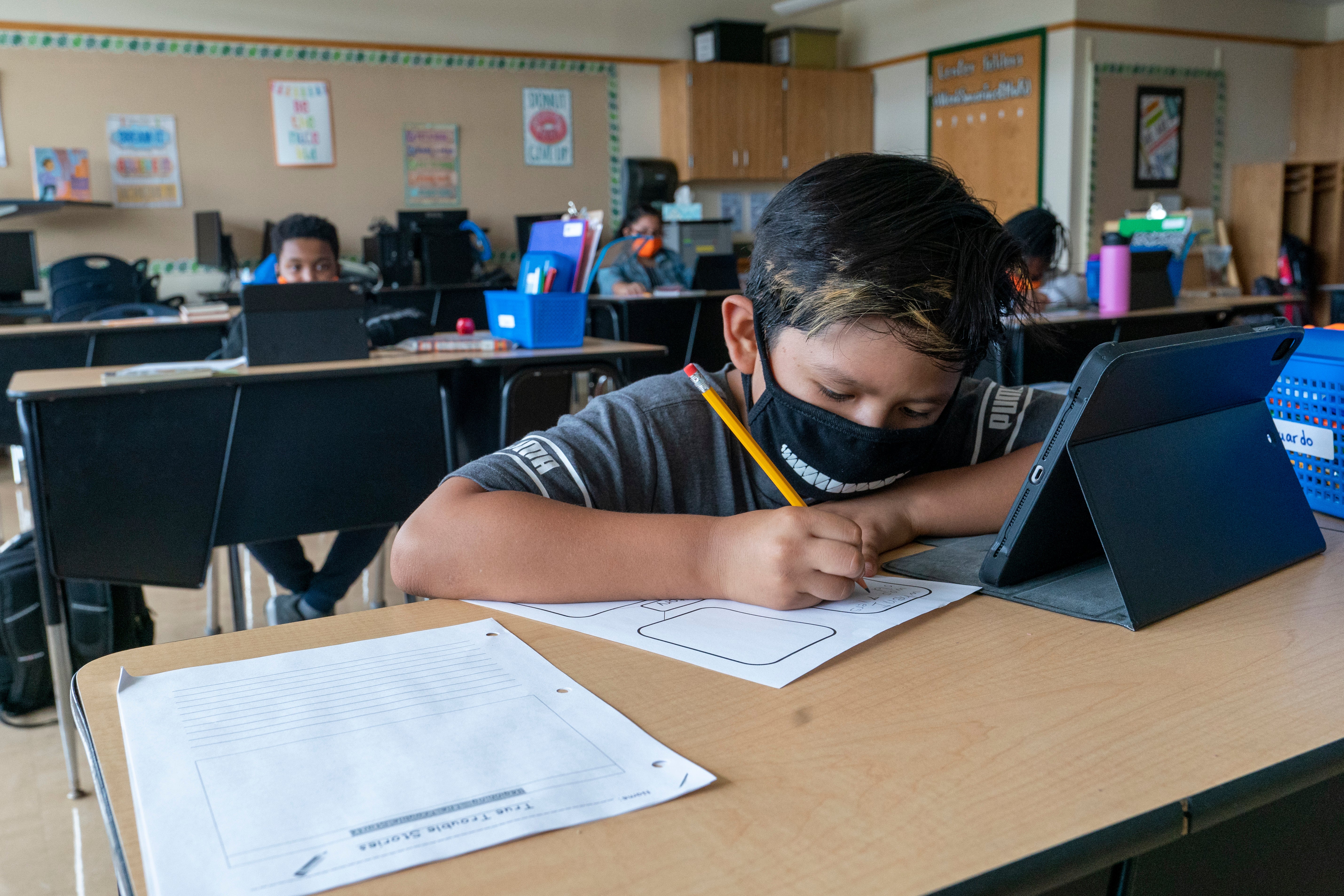EXPLAINER: Why masks are again advised for everyone indoors
U.S. health officials say the highly contagious delta version of the coronavirus is behind changes to mask guidelines

Your support helps us to tell the story
From reproductive rights to climate change to Big Tech, The Independent is on the ground when the story is developing. Whether it's investigating the financials of Elon Musk's pro-Trump PAC or producing our latest documentary, 'The A Word', which shines a light on the American women fighting for reproductive rights, we know how important it is to parse out the facts from the messaging.
At such a critical moment in US history, we need reporters on the ground. Your donation allows us to keep sending journalists to speak to both sides of the story.
The Independent is trusted by Americans across the entire political spectrum. And unlike many other quality news outlets, we choose not to lock Americans out of our reporting and analysis with paywalls. We believe quality journalism should be available to everyone, paid for by those who can afford it.
Your support makes all the difference.Wait, we're supposed to wear masks again? Even if we are vaccinated?
For a large part of the U.S., that's the latest advice from the Centers for Disease Control and Prevention The CDC this week revisited and revised its guidance for wearing masks indoors to stop the spread of coronavirus.
The change comes two months after the agency eased its mask advice, declaring that fully vaccinated people no longer had to cover up at indoor public places. Since then, the agency also said vaccinated adults and teens no longer needed to wear them at summer camps and schools.
A look at the latest developments:
WHAT CHANGED?
CDC officials announced that people who are fully vaccinated should resume wearing masks indoors if they live in areas where the virus is surging — which is most of the country, or more than 60% of U.S. counties. Masks generally aren't needed outdoors.
The agency also said everyone — teachers and students — should go back to wearing masks in schools, whether the virus is surging in your community or not.
The CDC wasn't the first to call for the return of masks. In recent weeks, a number of cities and towns in hot spots have brought back indoor mask rules. The list includes municipalities ranging in size from Los Angeles to Provincetown, Massachusetts More places, as well as businesses, took steps to join the list after Tuesday's CDC announcement, including Kansas City and the state of Nevada
WHY THE CHANGE?
It's all because of the highly contagious delta version of the virus, the CDC said. That variant is driving surges of COVID-19 in much of the country and now accounts for more than 80% of infections. CDC officials said new information about its spread forced them to reverse course.
The vast majority of new infections in the U.S. continue to be among unvaccinated people. Rarely, some vaccinated people do end up getting infected as well, although the vaccine cushions the blow and generally protects them from severe illness.
Previously, vaccinated people with “breakthrough infections” had low levels of virus and were unlikely to spread the virus much, CDC Director Dr. Rochelle Walensky said. But new data shows that isn't the case with the delta variant. Vaccinated people “have the potential to spread that virus to others,” she said.
WHAT DIDN'T CHANGE?
The guidance for anyone who hadn't gotten a COVID-19 vaccine stays the same: Masks are recommended indoors, pretty much everywhere.
Everyone — regardless of vaccination or location — should wear a mask while at airports or train stations, or while riding buses, trains or other public transportation.
Hospitals stores and businesses may require masks, too.
The CDC did not explicitly change its guidance for summer camps, mostly because the season is ending and schools are opening soon.
WHERE ARE THE HOT SPOTS?
The new guidance is for areas with substantial or high virus spread, as shown on a CDC map. That means at least 50 new cases per 100,000 people in the last week.
New case rates are particularly high in the South and Southwest, according to the CDC tracker. In Arkansas, Louisiana and Florida, every county exceeds the CDC benchmark. And rates are high in all but a few counties in Alabama, Mississippi and Missouri.
___
The Associated Press Health and Science Department receives support from the Howard Hughes Medical Institute’s Department of Science Education. The AP is solely responsible for all content.